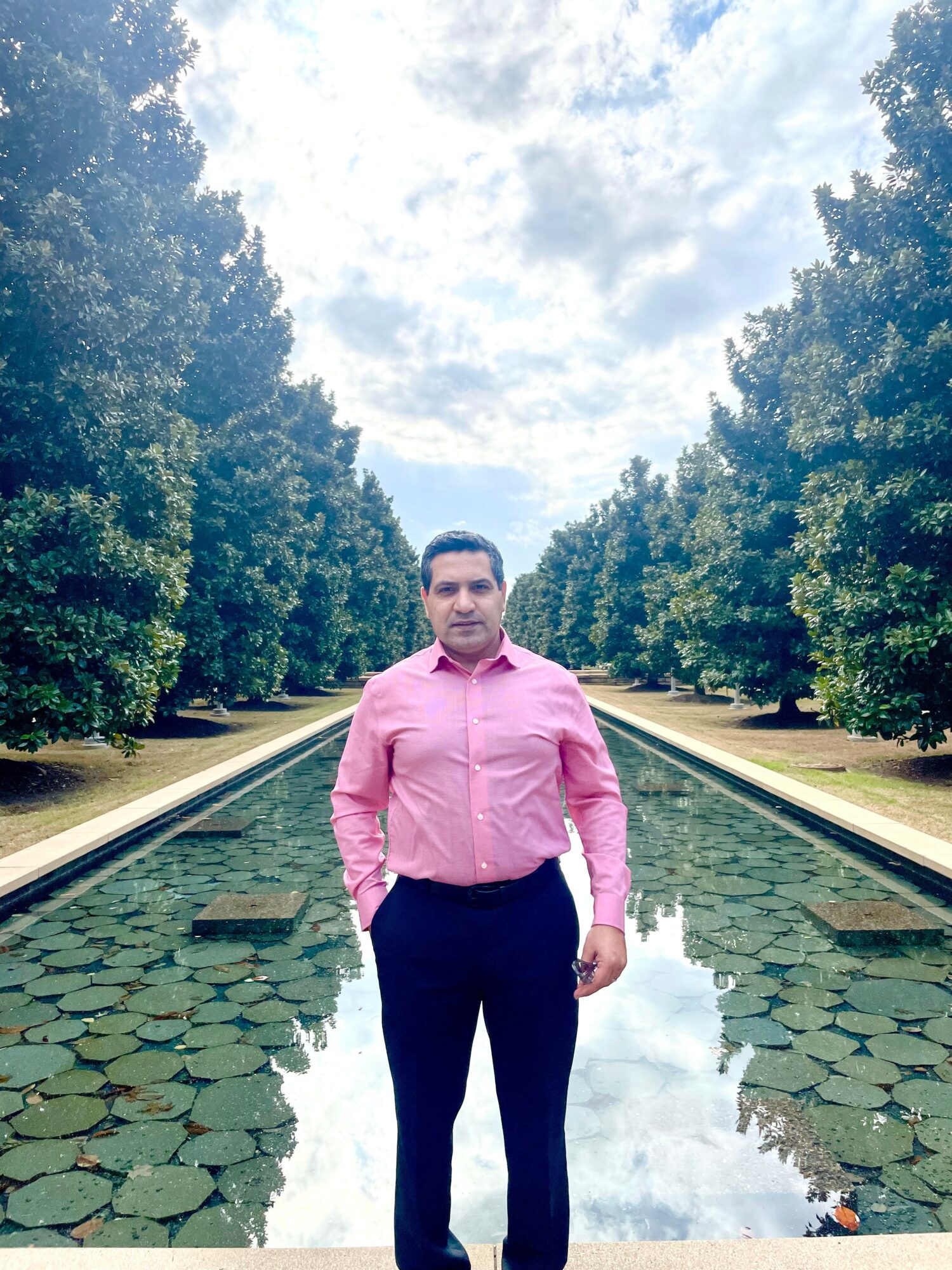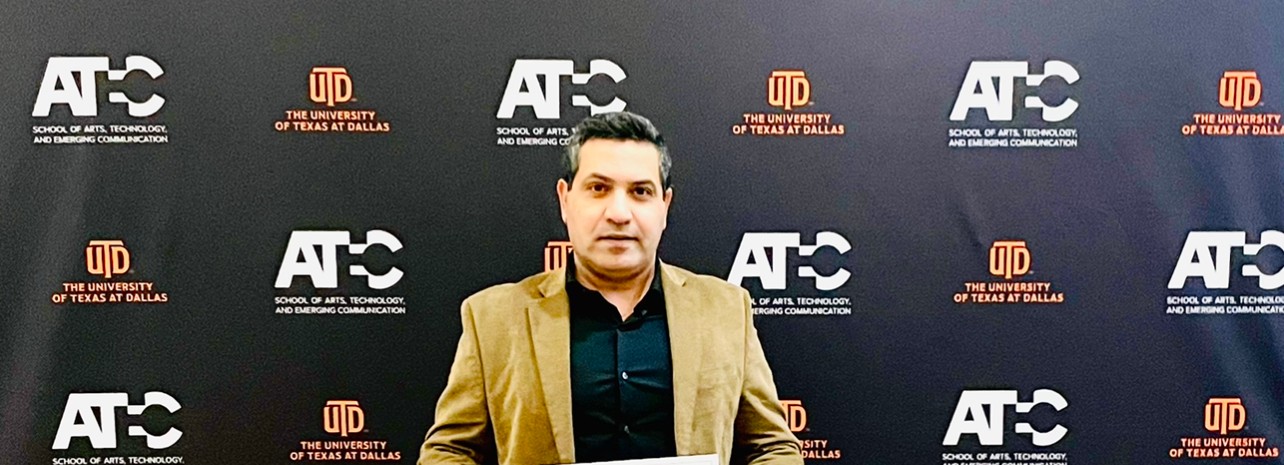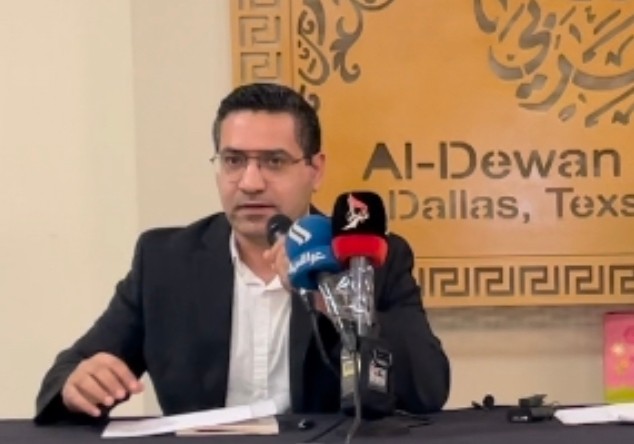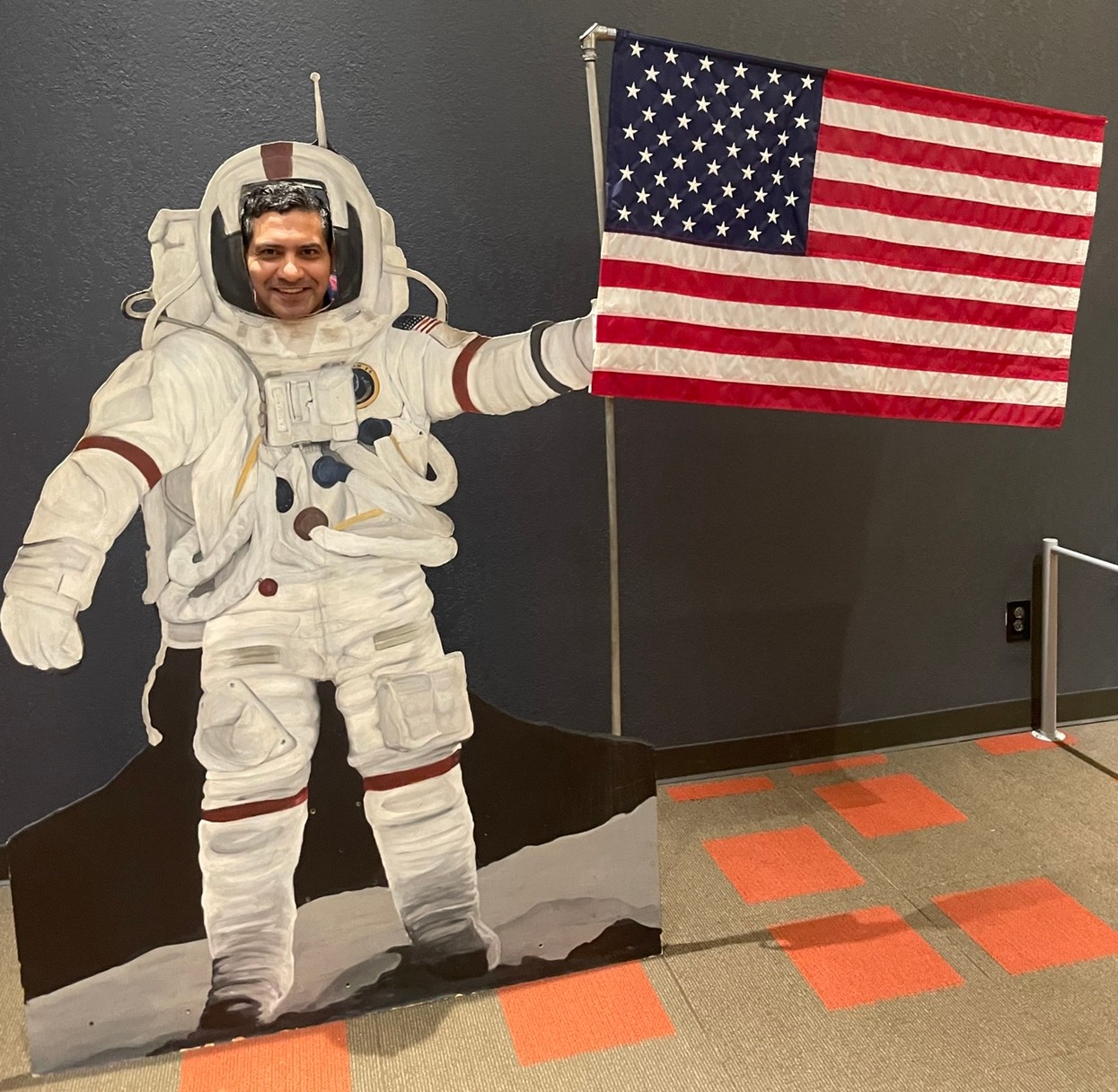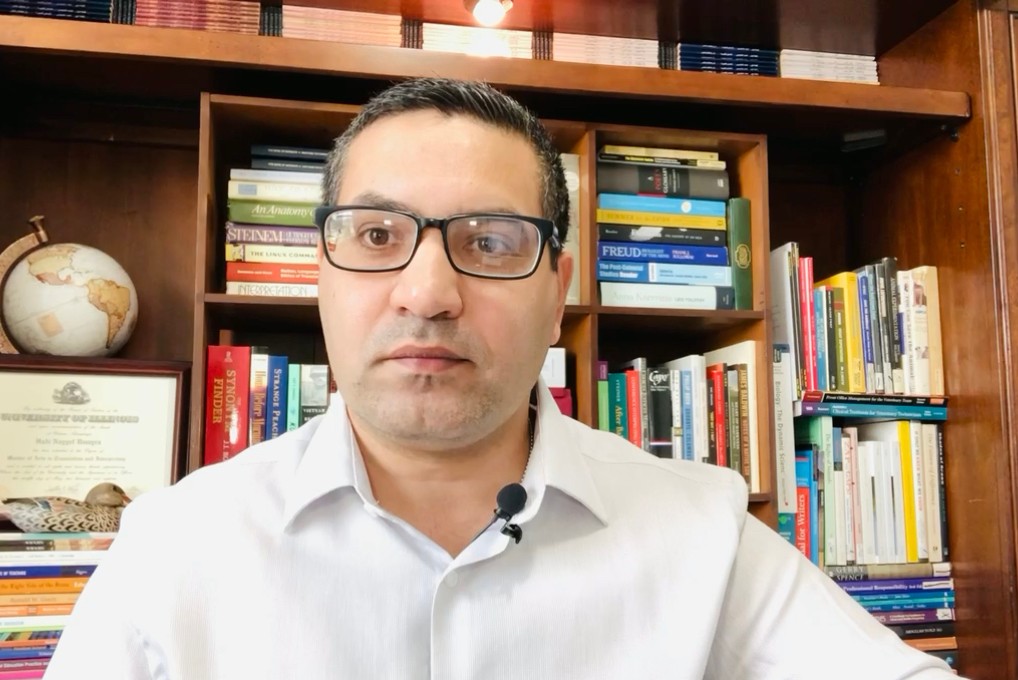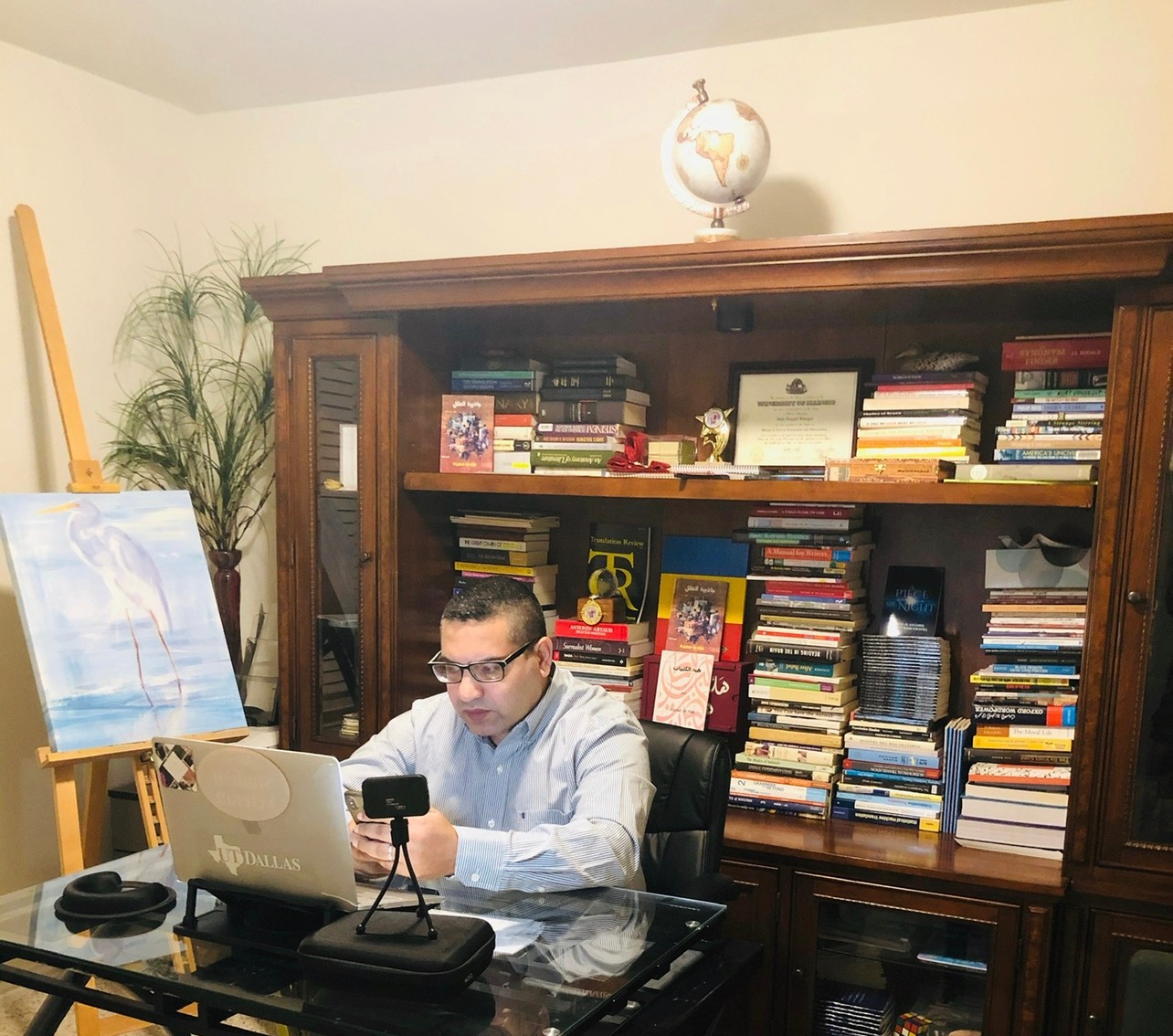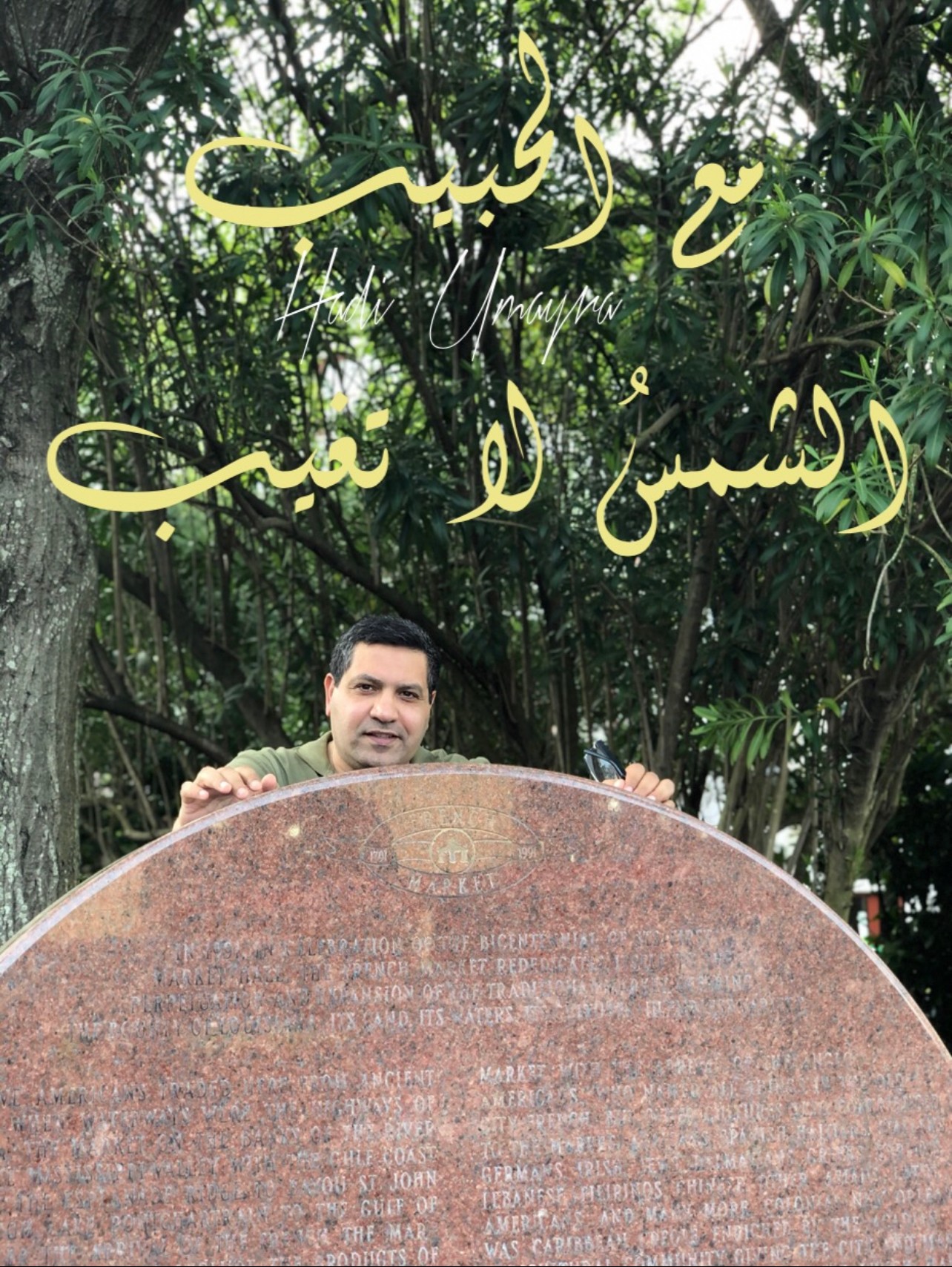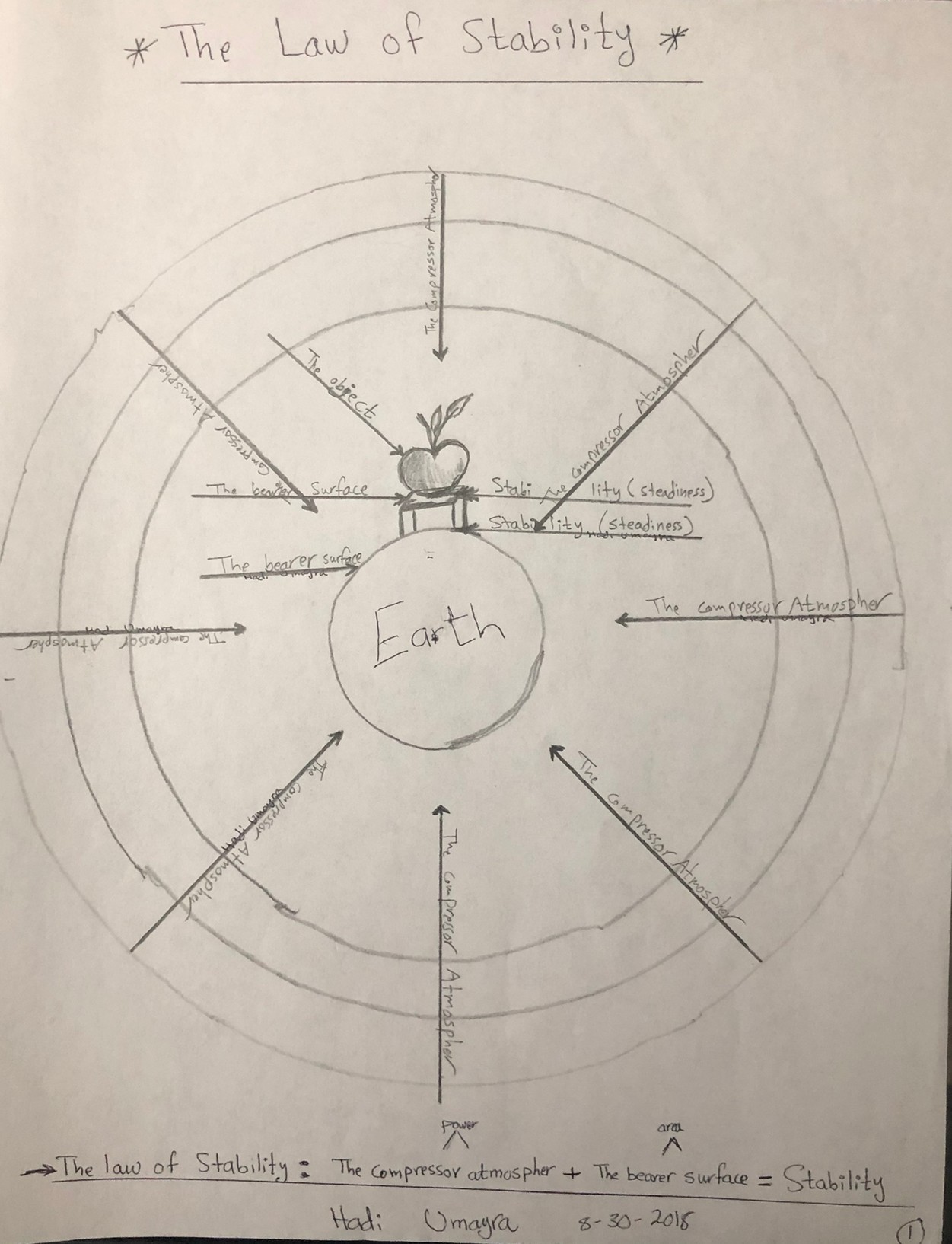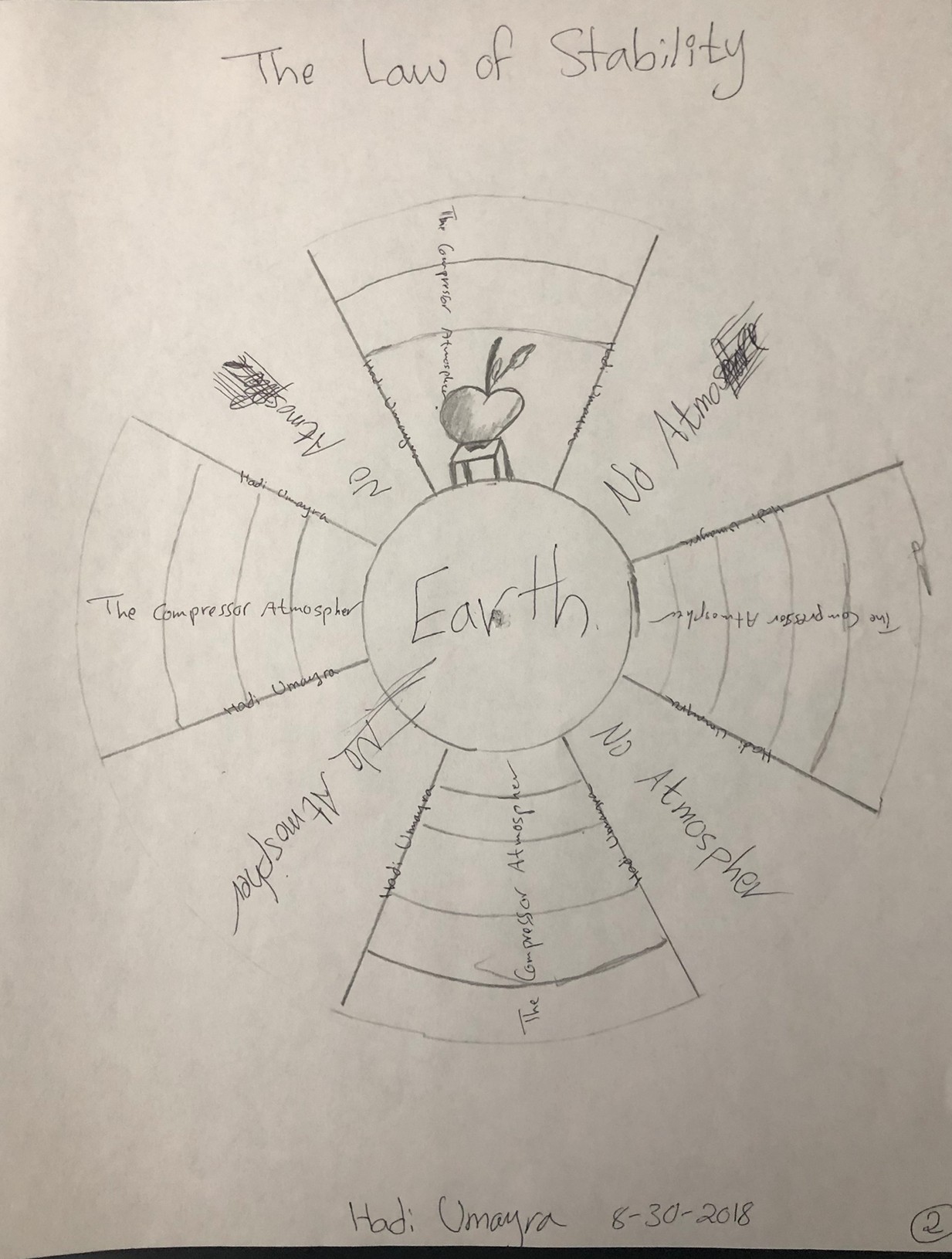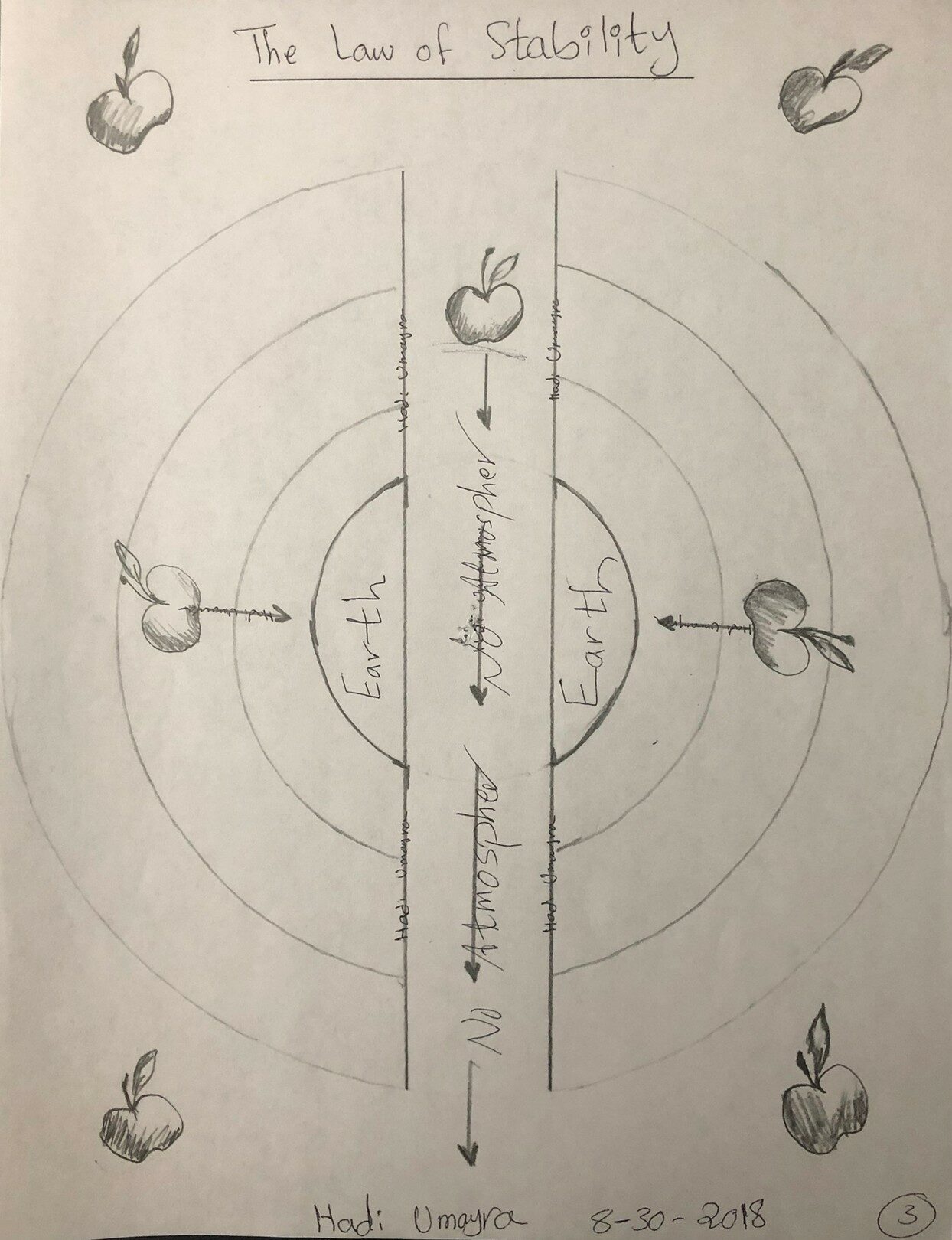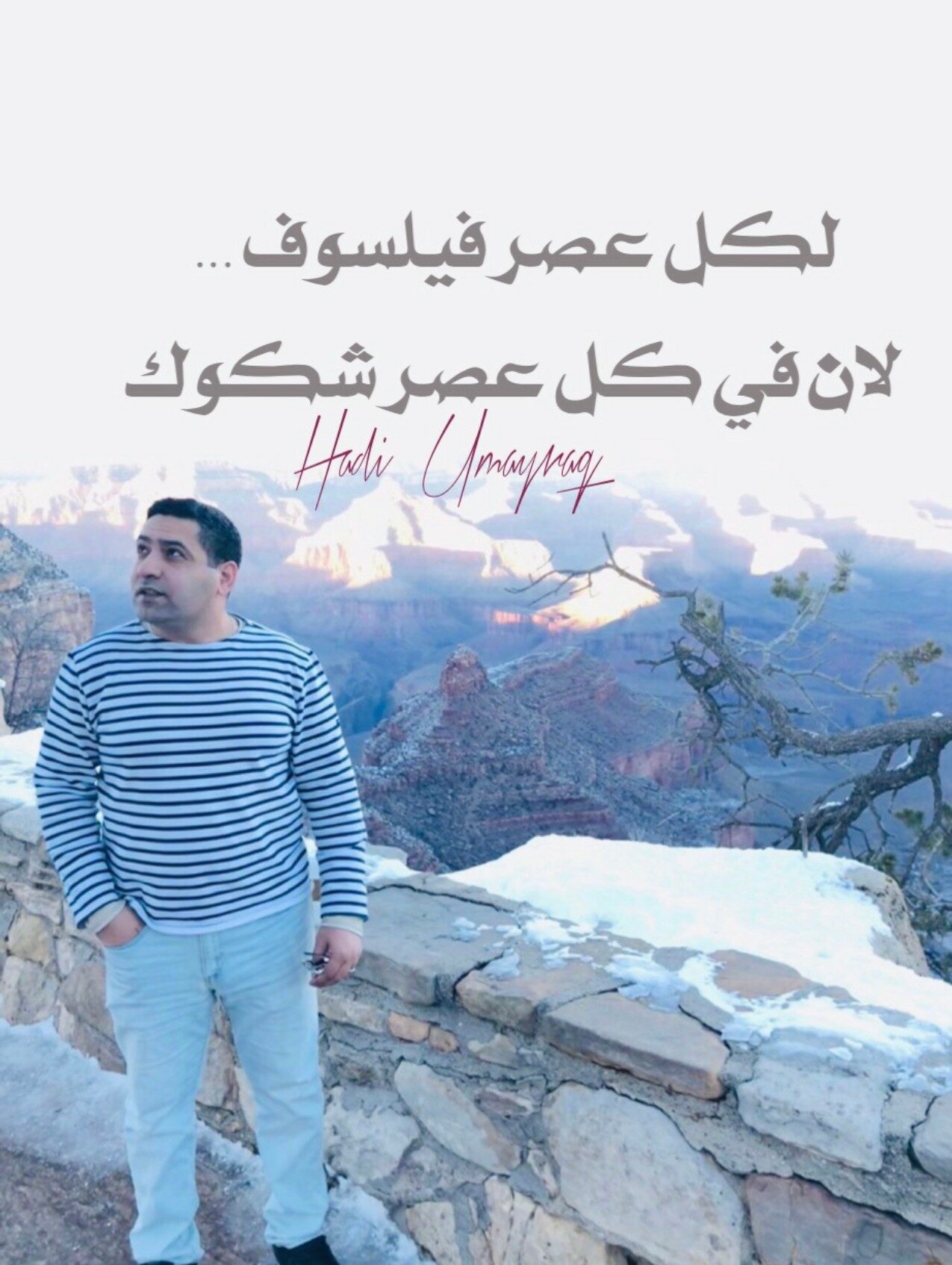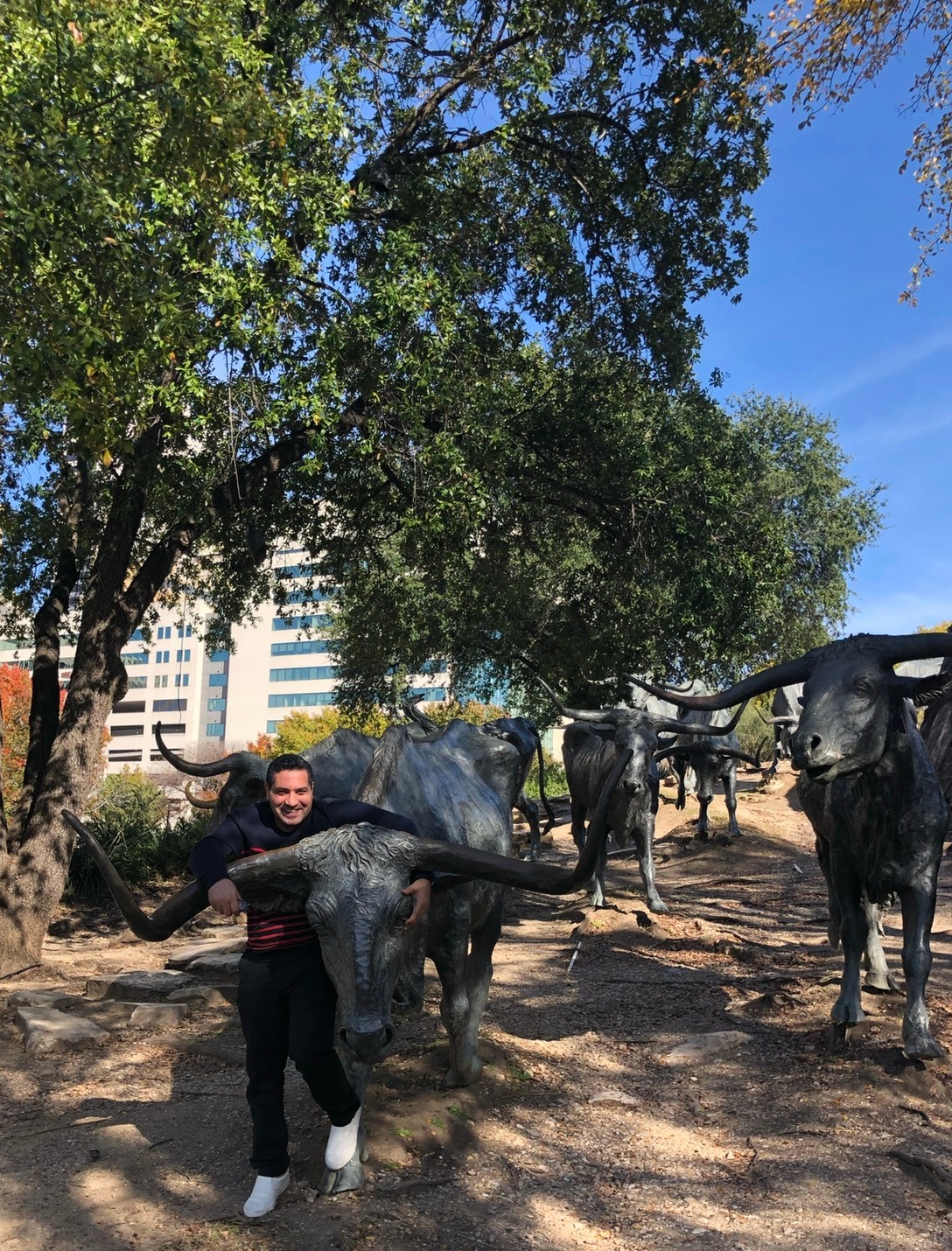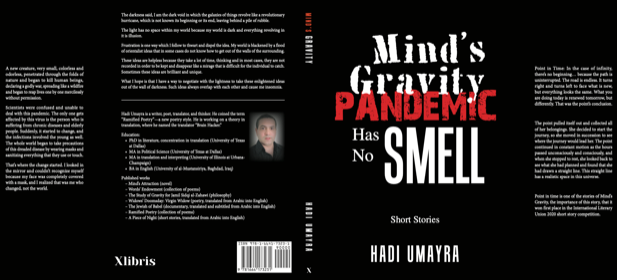

Today we’d like to introduce you to Hadi Umayra.
Hi Hadi, it’s an honor to have you on the platform. Thanks for taking the time to share your story with us – to start maybe you can share some of your backstories with our readers?
My story begins with my absolute belief that tomorrow is an update of yesterday. This belief comes from how I understand life. Today, I am thinking about how I live, and how I live depends on what I write and my writings always talk about controversial things that differ from what was presented yesterday. For example, what was presented in the past about the theory of gravity by Isaac Newton has nothing to do with what I presented today, and my thought of gravity today will be an update of yesterday. I said there is no gravity but there is stability and to achieve stability, there must be three factors. The first element is the compressor (Atmosphere), the second is the bearer (Surface) and the third is the weight (Object). Everybody knows the story of Isaac Newton when he was sitting underneath a tree and the apple fell over his head, and from that event, the idea of gravity came to his mind.
Newton described gravity as “an ever-present force, a tug that all objects exert on nearby objects. The more mass an object has, the stronger its tug. Increasing the distance between two objects weakens the attraction.” But now, I described gravity in a different way. First, I would like to define the term gravity. This term as we know existed before the idea of gravity, which means attracting something to something, and if the theory didn’t exist before, such a term could not be found. For that reason, every new concept comes with a new term. I’m talking today about a revolution in physics, exploring the idea of gravity from another perspective. The stability of objects on the Earth’s surface is the result of the influence of the gases that surround the Earth, which I call the compacting atmosphere. The function of this atmosphere is to press the objects inside it to ensure stability on whatever surface they settle on. In the event of any physical or chemical breach or change of those gases that are pressing on stable objects, those objects will lose control and stability on the Earth’s surface and scatter, and that’s what we see and hear happening outside the atmosphere surrounding the Earth.
For example, if we take a mass object and release it into the atmosphere, in the outer shell of the earth. We will see this object descend and begin to fall sequentially, there is no stable surface on which to stand or to support the falling object in the outer atmosphere. But when this falling object approaches the surface of the earth (stable surface), this falling object will weigh as a mass heavier than its carrier (the air). For that reason, the falling object will end up landing on the ground. The object falls on the ground because the earth’s surface stables and its mass are much larger than the falling object’s mass. Here we infer that the object falls on the earth, not because of the effect of gravity. There is no gravity on Earth at all but the falling object in fact is looking for a bearer (stable surface). The identification of the word gravity means the attractive force by which it attracts other things, and this recognition makes it clear that gravity is not the tangible material or main reason that affects the attraction of the object. For instance, if someone creates a second surface with a mass or size 1,000 times larger than the size of a human being at a hypothetical distance. Let’s say 100 meters away from the earth’s surface, and throw a heavily weighty object on it. We will observe that this falling object can stabilize on that floating surface which hypothetically created in the atmosphere. We conclude that man or any other creature has achieved stability with the help of the compressive atmosphere. To prove this theory, we will use the same example of a floating surface and make it fly outside the earth’s atmosphere, which is certain that the object will not be able to hold or stabilize on that hypothetical floating surface because the object has lost one essential element (compressor atmosphere) to keep the object stable not floating in space.
Another example we can discuss here is the famous falling apple. When Newton was sitting next to a tree and began to think about that hidden power that attracted that apple to the surface of the earth. He deduced the term gravity by relying on the word gravity that existed in the first place. I will respond to the idea of gravity that Newton came up with and explain the fall of the apple in the same way which I explained earlier. The apple that fell from the tree was heavier than the bearer (air). The apple fell looking for a fixed surface to settle on (Earth); knowing that; the apple was connected to the branch by the stem before the fall. The stem did the work of the virtual floating surface in the atmosphere, on which the floating object has settled on a bearer applying the same mechanism. The weight of the apple is heavier than the stem. This heavyweight made the fall, mass, and gravity of the earth according to our current estimate became the new bearer. And remember, that earth is not the main bearer of the fallen apple but it was the place for the tree to grow on.
Here I’m going to explain how the apple fell. The apple grew and its size became large, difficult for the apple stem to carry the ripe apple, and the heavy apple separated from the main weak holder (apple stem). This process made the apple look for another carrier and find another bearer (Earth surface). In a different scenario, it is possible to see the separated apple land on another branch located below the fallen apple and not fall on earth. Here, in this case, the second branch acted as a secondary bearer.
There is another study claiming that the moon is formed by a giant planet colliding with Earth and part of the Earth is divided to form the moon. I am going to take this study as a case study to illustrate the idea of the compressor atmosphere, the virtual surface, and the gravity theory that Newton has come up with. If the moon is part of the Earth, why hasn’t it retained the so-called gravity that we have nowadays on Earth?
I’m going to compare the earth’s surface and the moon’s surface. The earth’s surface owns the atmosphere and this atmosphere I called the compressor atmosphere. This atmosphere is responsible for the stability of the objects according to their weight on the virtual surface. The moon’s surface does not have a compressive atmosphere for that reason whenever objects approach the moon’s surface to lose stability and end up as a floating weight. I find that the earth’s atmosphere is one of three elements that are responsible for the stability of the earth. If the compressor atmosphere surrounds the moon’s surface, then we end up having stability on the moon. This interpretation applies to the survival of planets and flying objects that have been noticed in the orbit in this big universe. Perhaps this interpretation applies to the belief in doomsday. This belief that some heavenly religions believe in!!!
Compressor (Atmosphere) + Bearer Surface (Area) + Weight (Object) = Stability
Compressor (Atmosphere) – Bearer Surface (Area) + Weight (Object) ≠ Stability
Compressor (Atmosphere) + Bearer Surface (Area) – Weight (Object) ≠ Stability
I’m sure you wouldn’t say it’s been obstacle-free, but so far would you say the journey has been a fairly smooth road?
One of the obstacles that I always face is how to choose the topic which I will write about. When I choose a topic that is outside the scope, it’s going to be a difficult task to convince the reader of what is going on in my mind. The reader always returns to information he/ she regards as an immutable fact and does not believe what is controversial or against their beliefs. One such truth that the reader believes is the theory of gravity and the Newton story. We’ll see the reactions of readers as they read this new theory that explains gravity in a different way.
Thanks for sharing that. So, maybe next you can tell us a bit more about your work?
I am a thinker, a writer, a poet, and a translator. I started my journey with writing when I was a young boy in middle school.
This is another study I came up with. I called the translator a brain hacker. My thoughts set me apart from others.
Brain Hacker
Hadi N. Umayra
The University of Texas at Dallas
Brain Hacker
Translation has been around long enough to account for the history of the world itself. Some scholars, historians, linguists, and gurus in various departments have argued that translation may even have predated the Bible. Translation, especially literary translation, is a key part of the way society works. Each region of the world has its way of communicating in its writing. Therefore, outsiders may not understand the meaning of the text and therefore resulting in a barrier and, subsequently, the end of a culture. This line of thought, therefore, leads one to think of how the text is being translated and which methodology is most effective as there have been several in the course of history. This essay, therefore, focuses on the theory behind translation, known as brain hacking.
For one to understand the theory behind brain hacking, one first needs to have a background in translation. For several years, translators have played a major role in the advancement of society. The translation is a Latin derivative that means “to bring or carry across” (Kwintessential, 2017). The author further adds that this meaning, accompanied by its Greek meaning of “to speak across,” has been at the heart and soul of the translation theories that have come up over time. As early as the second millennium BC, translation was already in use by the Asians who sought to translate the Sumerian poem, Gilgamesh. A great part of the Renaissance academic can be accredited to the works of Arabic scholars who translated the Greek knowledge and findings after colonization (Kwintessential, 2017). The Bible, too, is subject to the prowess of some scholars who seek to understand and deliver its contents to those who did not understand it. However, there are different versions of the Bible, as there are versions of many other texts subject to translation. These different versions come up due to the various techniques that have been used to translate the texts. These techniques can be explained in the form of theories.
Several methods have been used over time in the process of translation. The purpose of translation is to carry over the meaning of a text into a new language. The context of a text is vital. The translator has to understand the language in depth before trying any translation. A major reason for an in-depth understanding of the language is to avoid direct translation which leads to putting things out of context. The process of translating word for word is referred to as “text-focused.” This form of translation was a method used very earlier on in the formation of translation. The issues that arose owing to the lack of interpretation of text were “treated as a natural outcome” (Sdobnikov, 2011). However, translation has taken great strides from this initial stage with linguists and scholars such as Annie Brisset, among others making significant contributions to the process. She was crucial in providing the link between language and cultural identity, insisting that the target language is as every bit important as the source language and its culture (Brisset, 1996). Additionally, the hermeneutic approach to translation sees the translator as a writer capable of capturing what the author of the original text intended to say (Mathieu, 2015). Therefore, one begins to reason the validity of translators being brain hackers.
Telepathy and Mind Reading
Telepathy and mind-reading are topics that arise when one considers the extent to which a translator can immerse themselves into the works of an author. Telepathy according to the oxford dictionary, is a communication of thoughts or ideas in a manner that goes above the normal senses. This communication of ideas and thoughts often is between minds through means that surpass the normal senses (Venkatasubramanian et al., 2008). Authors communicate their thoughts, feelings, and situations among other things in their text. Each one of them aims to deliver a message to the reader in a manner that they see fit. The path for this communication is the language found in the text. D. Seleskovitch and M. Lederer in their communicative approach to translation, insist that language is but a vehicle for the message (Mathieu, 2015). They insist that the whole essence of reading is to get the experience based on the interpretation of the material. This is the “theory of sense” (Mathieu, 2015). Therefore, this mind-to-mind connection between the author and the translator in which the author’s thoughts are fed directly into the translator partially accounts for telepathy. The translator can understand the situation, emotions, feelings, and the message that the author intends to pass on to the reader and then becomes an author himself during translation.
The hermeneutic approach is a perfect example of mind reading. George Steiner is credited for the vast majority of the work behind this approach. In it, he explains that translation is “not a science but instead an exact art (Mathieu, 2015).” With regards to mind-reading, George says that a translator has to immerse themselves in the world of the author, leave his work and finally become an author themselves in translation, all the while communicating the same message that the author intended to pass in the beginning. Therefore, for such a feat to be considered even remotely possible, one must surely take into account the possibility of mind-reading.
Brisset talks about language and the importance it has during translation. In her work “The Search for a Native Language: Translation and Cultural Identity,” she emphasizes the importance of a translator understanding both the source and the target language (Brisset, 1996). Once the translator properly understands the source language, then can they move ahead to understand what the author of the text in question intended to say. This characteristic is common for all translators, or at least should be. However, even if one can understand basic language, it does not follow that they will be able to decipher the content of the mind of the author.
Thought Transmitting and Study the Source Culture
One then begins to perceive a professional translator as indeed a brain hacker. A hacker can access information without necessarily going through the proper channels. According to the dictionary, a hacker is a person who uses a computer to gain unauthorized access to data. Therefore, the process of mind hacking in a translator’s case would be trying to gain access to information that is not written in the text but is withheld in the mind of the person who wrote the text. A professional translator can interpret information that is not visible to the normal reader. They transfer the thoughts of the writer into their minds and make them theirs. The translator seeks to understand the condition of the author during the time of writing. If an author were to translate just word for word, then every reader after that would have their own understanding of the text.
Similarly, a professional translator has to understand the cultural aspects surrounding the source text and the target language. In a sociolinguistic approach to translation, there is a lot of filtering depending on the social and cultural impact of the text. Some information may or may not be translated depending on the translator’s social background (Mathieu, 2015). However, this limitation is overcome by their ability to read deeper into the text and understand what the author means to say even though their cultural background does not account for it. In as much as the translator hacks into the mind of the author, they hack theirs as well. They gain the ability to transfer their thoughts into a culture that they have not lived in before but still desire to understand.
Conclusion
The value of translators, though diminishing over time, cannot be ignored. The process of communication in itself is in part translation. One seeks to understand the language of the other and respond accordingly. In this sense, everyone becomes a translator. However, where literature is involved, a different set of skills comes into play. The ability of a translator to immerse themselves in the author’s work and come up with a translation that communicates the very essence of the text is outstanding. This ability is only equal to that of a hacker who can access information from a source through backdoor channels to become the third eye. Translators do indeed hack the minds of the authors to produce a true and legitimate translation of their work and therefore, clearly express the theory of translation known as brain hacking.
My Education:
B.A. degree in English Language. AL-Mustansiriyah University, Iraq 1998 – 2006
M.A. Translation & Interpreting Studies. The University of Illinois at Urbana-Champaign 2016 – 2018
M.A. Political Science. The University of Texas at Dallas 2019 – 2021
M.A. Literature. The University of Texas at Dallas 2018 – 2022
This is one of my poems:
WE LIVE BUT ONE LIFE
Think of the stars, patterned like scattered pearls,
The painting they in strife with darkness paint;
How knowledge rises from the strife of science,
In riddles, theories and propositions;
How the world cries out for imagination,
To tie together all the strings of thought.
When roads get longer, distances diminish;
We want solutions now, but will not change:
Always there are unanswered questions, answers
That does not need to be put to the question:
What’s obvious should not be rationalized.
For knowledge is the gateway to the darkness,
And science, with its strange laboratories,
Finds mysteries that help us humans grow;
Truth is the daughter only of research.
Is there any advice you’d like to share with our readers who might just be starting out?
Always follow your thoughts because they are the way to creativity. Always remember that tomorrow is an update for yesterday.
Contact Info:
- Website: https://mefiraq-tefl.bridge.edu/
- Instagram: https://www.instagram.com/hadi_umayra/
- Facebook: https://www.facebook.com/hadiumayra
- Youtube: https://www.youtube.com/watch?v=FnHa2MmIoD8
- Yelp: https://www.amazon.com/Hadi-Umayra/e/B07JMNP5QB/ref=dp_byline_cont_ebooks_1
- Other: https://translation.illinois.edu/news/2022-03-23/tis-alumnus-hadi-umayras-journey-army-veteran-literary-translation-professional
